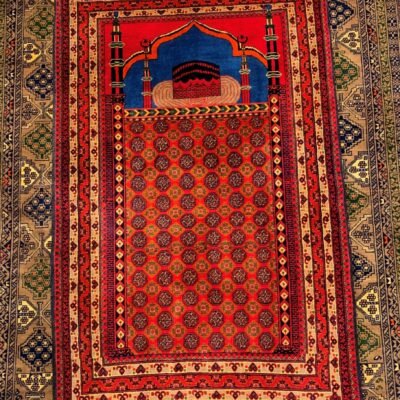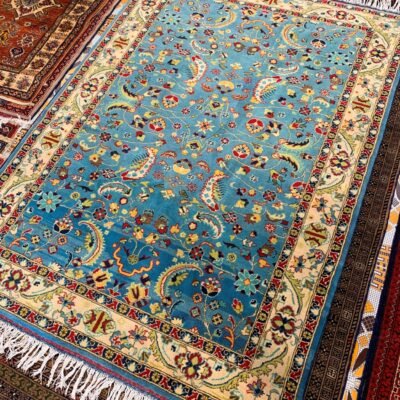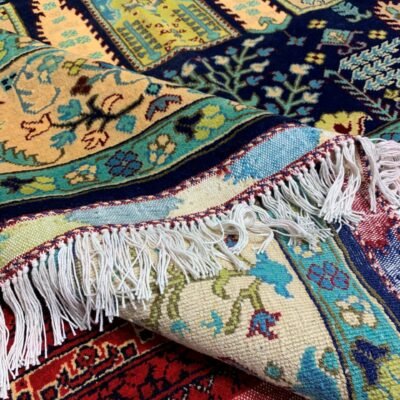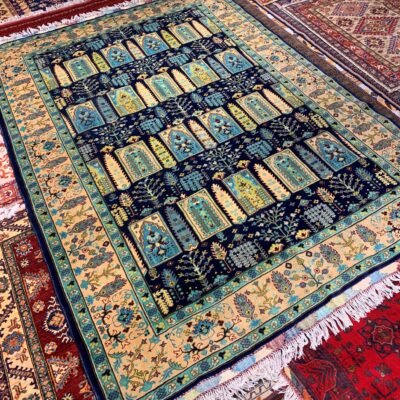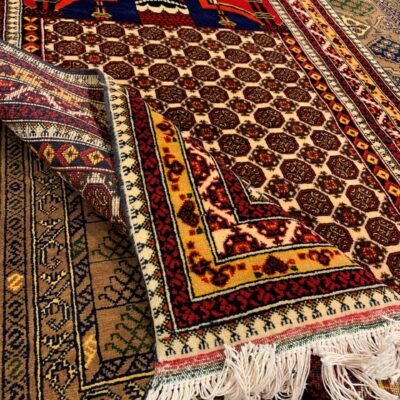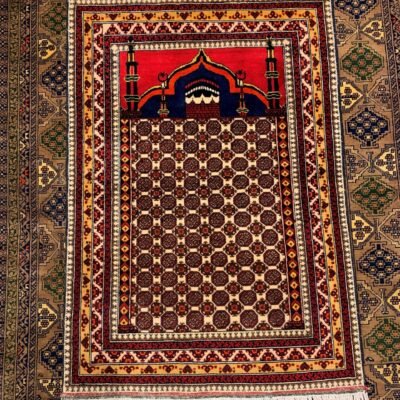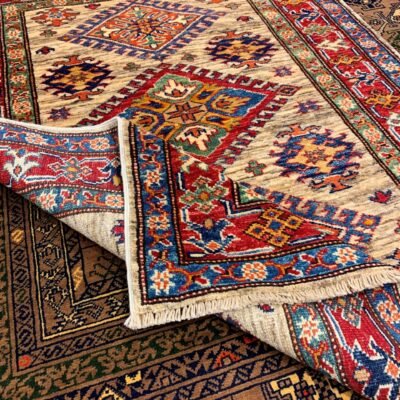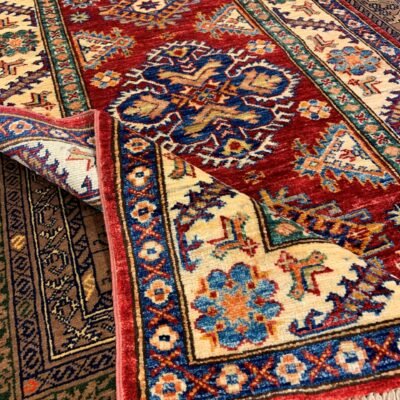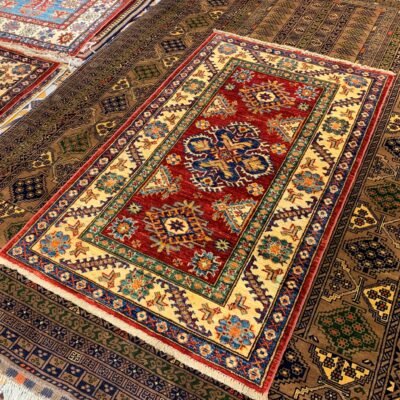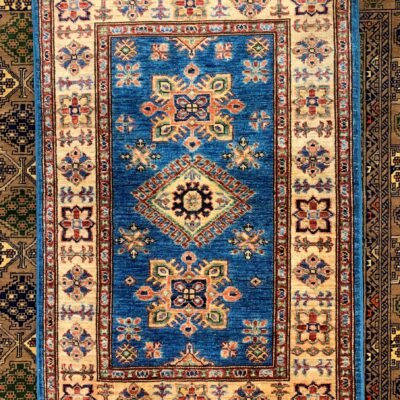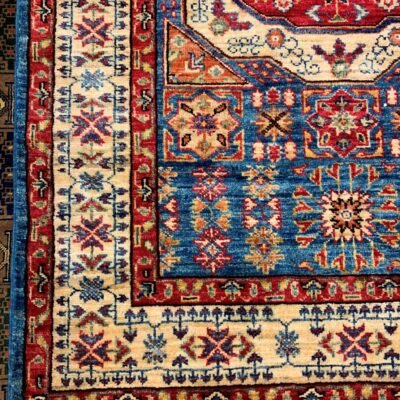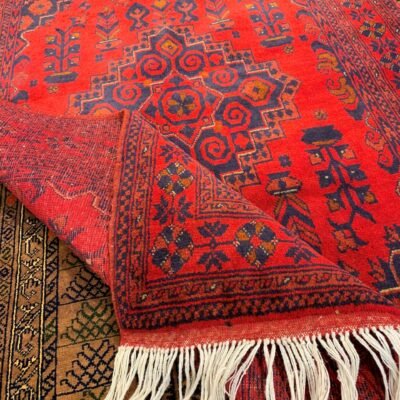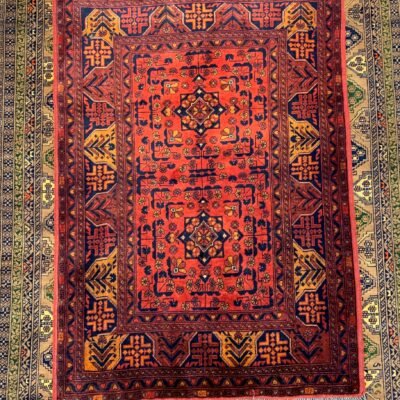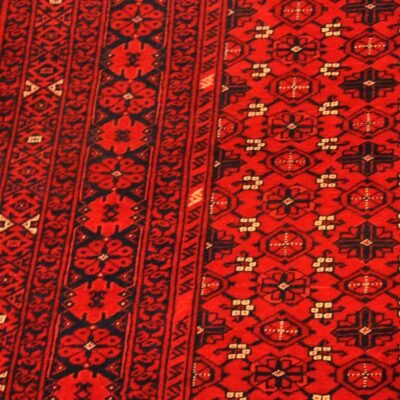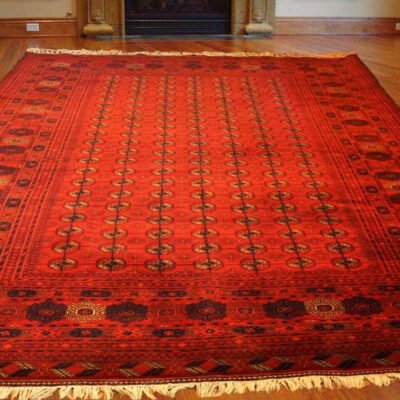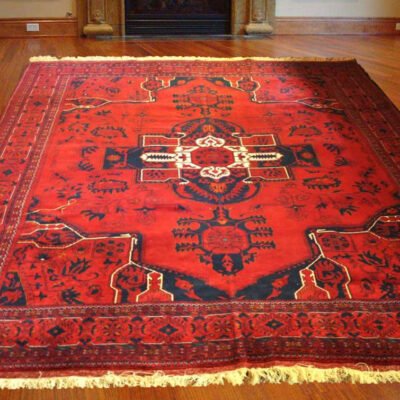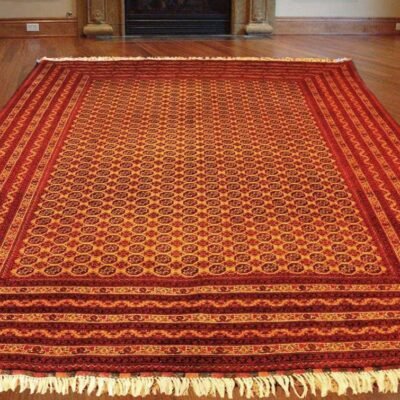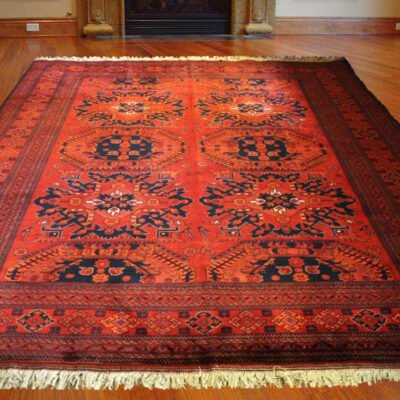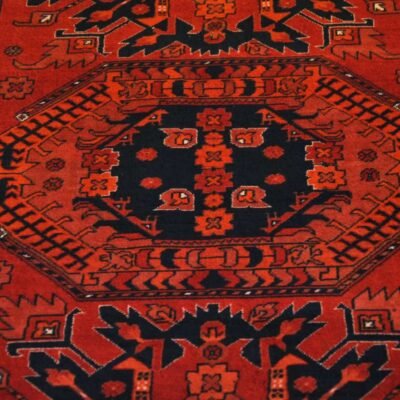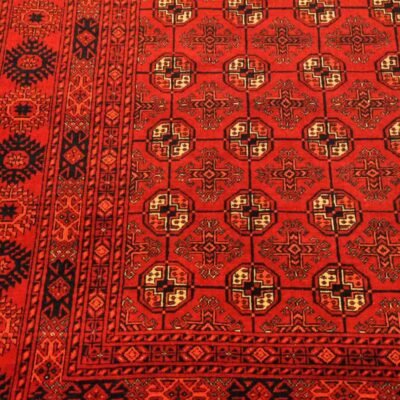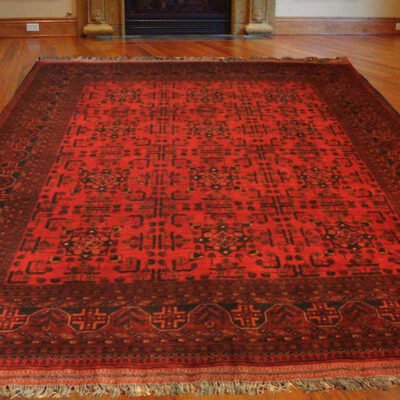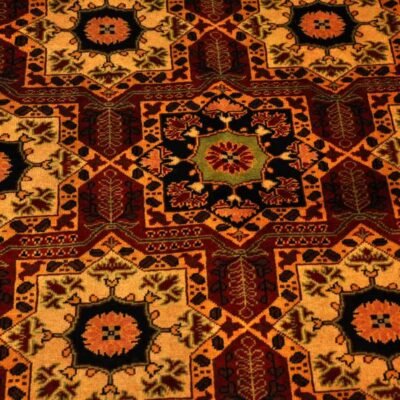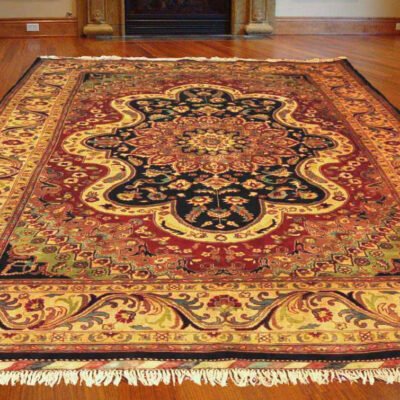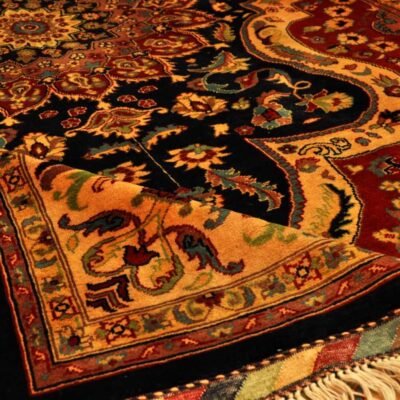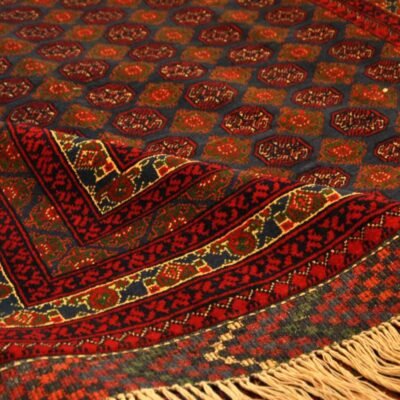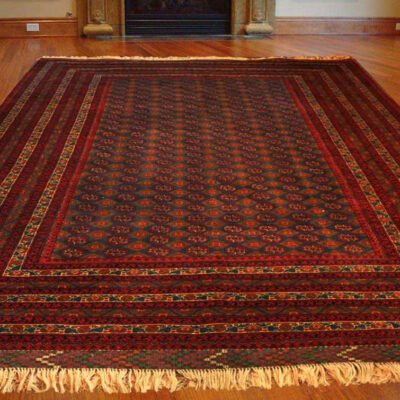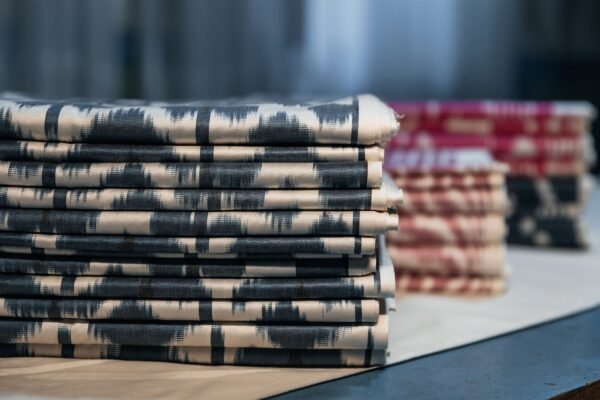Weaving Stories into Threads
Afghanistan rugs are not just about aesthetics; they are repositories of stories and traditions. Each rug tells a unique tale, whether it's a depiction of nomadic life, a symbol of tribal identity, or a representation of Afghanistan's natural beauty. The weavers, often women, infuse their rugs with personal experiences, cultural values, and a sense of belonging.
These rugs have played pivotal roles in Afghan households for generations. They have provided warmth, comfort, and a sense of cultural identity to the people who crafted them. Today, they continue to bridge the past and present, reminding us of the enduring spirit of Afghan culture.
In essence, Afghanistan rugs are not merely floor coverings but expressions of cultural heritage and craftsmanship passed down through the ages. They are a testament to the enduring spirit of a nation that has faced countless challenges while preserving its artistic traditions.
The Artistry of Handwoven Wool Rugs
The Art of Hand Weaving
Behind the exquisite beauty of Afghanistan rugs lies an art form that requires immense skill, patience, and dedication. Hand weaving wool rugs in Afghanistan is a labor of love that has been honed over centuries, and it is a craft that is deeply intertwined with the nation's cultural identity.
The Intricate Process
The process of creating handmade wool rugs is a meticulous one, involving various stages from sheep farming to the final weaving. The journey begins with the careful selection of high-quality wool, often sourced locally, to ensure durability and softness. Then comes the dyeing process, where natural ingredients such as plants and minerals are used to achieve the vibrant colors that Afghan rugs are known for.
Skilled artisans, often working on traditional vertical looms, meticulously hand-weave these rugs. Each knot is tied with precision, creating intricate patterns and designs that are a hallmark of Afghan craftsmanship. This process can take months or even years to complete, depending on the size and complexity of the rug.
Preserving Generational Knowledge
One of the most remarkable aspects of Afghan rug weaving is the transmission of knowledge from one generation to the next. Families often pass down the art of rug making, ensuring that ancient techniques and designs continue to thrive. This intergenerational connection is not just about skills but also the preservation of cultural identity and heritage.
The result of this laborious process is a masterpiece of artistry and culture – a handmade wool rug that exudes beauty, warmth, and a deep sense of tradition. Every rug is a testament to the dedication of the weavers and their commitment to preserving a craft that has endured for centuries.
Red Wool Rugs - A Symbol of Afghan Artistry
The Significance of Red Dyes
When you think of Afghanistan rugs, one color that stands out prominently is red. This vibrant hue holds great cultural and artistic significance in the world of Afghan textiles, making it a key element in the country's rug-making tradition.
The Prominence of Red
Red has long been a symbol of passion, vitality, and courage in Afghan culture. It is a color that evokes a sense of strength and resilience – qualities that have defined the Afghan people throughout their history. As a result, red wool rugs are not just floor coverings; they are expressions of Afghan artistry and identity.
Natural Dyes and Cultural Symbolism
What makes red in Afghanistan rugs even more special is the use of natural dyes. Unlike synthetic dyes that fade over time, the natural dyes used in Afghan rug making are derived from plants, insects, and minerals found in the region. These dyes not only create lasting, vibrant colors but also carry cultural significance.
For example, madder root is a common source of red dye and symbolizes the strength of Afghan women, who are often the weavers of these rugs. Other natural ingredients, such as pomegranate skins and cochineal insects, are used to achieve varying shades of red, each with its own meaning.
In essence, red wool rugs in Afghanistan are more than just a choice of color; they are a celebration of Afghan culture, tradition, and the enduring spirit of a nation.
Finding Authentic Afghan Textiles in Uzbek Craft Shops
For those seeking to add the allure of Afghanistan rugs to their homes or collections, the journey often begins with the quest for authenticity. Afghan textiles are highly prized, but in a market flooded with imitations, finding the real deal can be a challenge.
Identifying Genuine Afghan Rugs and Textiles
Authenticity is the cornerstone of any valuable Afghan rug or textile. To ensure you're getting the real thing, consider these tips:
- Know the Patterns: Familiarize yourself with traditional Afghan rug patterns and designs. Each region and tribe has its own unique style, and this knowledge can help you spot imitations.
- Feel the Texture: Authentic Afghan rugs are typically handwoven with high-quality wool, resulting in a thick, durable texture. Run your fingers through the rug; it should feel robust and substantial.
- Check the Colors: Look for rugs with vibrant, naturally derived colors. Synthetic dyes tend to fade over time, whereas natural dyes remain vibrant.
- Ask for Provenance: Inquire about the rug's history and origin. Reputable sellers should be able to provide information about the rug's journey from Afghanistan to your hands.
- Uzbek Craft Shops - A Source of Authentic Afghan Textiles
When it comes to sourcing authentic Afghan textiles, Uzbekistan stands out as a reliable destination. Uzbek craft shops, with their long-standing trading connections with Afghanistan, often carry a range of genuine Afghan rugs and textiles. These shops have earned reputations for their commitment to quality and authenticity.
For a seamless experience in acquiring these exquisite Afghan textiles, consider exploring some well-known Uzbek craft shops located in cities like Tashkent, Samarkand, and Bukhara. These cities have a rich history of trade and cultural exchange with Afghanistan, making them prime locations to discover these treasures.
And if you're looking for a convenient way to access these unique Afghan textiles, you can integrate Alesouk into your journey. Alesouk is a trusted online platform that connects buyers with authentic Central Asian and Afghan products. With Alesouk, you can explore a wide range of genuine Afghan rugs and textiles while enjoying the convenience of online shopping. This allows you to not only appreciate the beauty of the craft but also embrace the authenticity of a rich cultural heritage from the comfort of your own home.
Caring for Your Afghan Rug
Maintenance and Cleaning
Once you've acquired an exquisite Afghan rug, it's essential to understand how to care for and maintain its beauty. These rugs are not just functional; they are pieces of art that can last for generations with proper care.
Routine Maintenance
- Regular Vacuuming: Vacuum your Afghan rug regularly to remove dust and dirt. Use a low-suction setting and a soft brush attachment to avoid damaging the delicate fibers.
- Rotation: To ensure even wear, rotate your rug every few months, especially if it's exposed to direct sunlight or heavy foot traffic.
Cleaning Methods
- Spot Cleaning: For spills and stains, gently blot the affected area with a clean, damp cloth. Avoid rubbing, as it can damage the fibers.
- Professional Cleaning: Periodically, consider professional cleaning by experts experienced in caring for wool rugs. They can deep clean and restore the rug's luster.
Storage
- Proper Storage: If you need to store your Afghan rug, roll it up with the pile facing inward and wrap it in breathable fabric. Store it in a cool, dry place to prevent mold and insect damage.
- Use Rug Pads: Placing a rug pad beneath your Afghan rug can provide extra cushioning, prevent slipping, and protect it from wear and tear.
By following these maintenance and cleaning tips, you can ensure that your Afghan rug remains a beautiful and cherished piece of art for years to come.
Afghan Rugs in Contemporary Decor
Integrating Tradition into Modern Spaces
The allure of Afghanistan rugs extends beyond their historical and cultural significance; they also possess a unique aesthetic appeal that complements contemporary interior design. Integrating these timeless pieces into modern spaces can elevate the ambiance and add depth to your decor.
Modern Interior Design with Afghan Rugs
- Contrast and Balance: Afghan rugs, with their intricate patterns and vibrant colors, can serve as focal points in minimalist or neutral interiors. The contrast between the rug's design and the surrounding space can create a visually striking effect.
- Eclectic Mix: Embrace the eclectic by pairing Afghan rugs with a variety of decor styles. These rugs can seamlessly blend with mid-century modern, bohemian, or industrial design, adding character and warmth.
- Layering: Layering rugs is a popular trend in modern interior design. Place an Afghan rug atop a larger, solid-colored rug to create depth and texture in your space.
Design Ideas and Tips
- Wall Hangings: Consider framing a smaller Afghan rug as a wall hanging. This not only showcases the rug's intricate design but also adds a unique and artistic element to your decor.
- Custom Furniture: Incorporate Afghan textiles into custom furniture pieces like cushions, upholstery, or throws. This allows you to infuse the beauty of Afghan craftsmanship into your daily life.
- Color Palette: Draw inspiration from the colors of your Afghan rug when selecting paint, furniture, and decor items. This ensures a harmonious and cohesive design.
Incorporating Afghanistan rugs into your modern decor is not just a design choice; it's a celebration of culture, tradition, and timeless artistry. By blending the old with the new, you create a unique and meaningful living space that tells a story of craftsmanship and heritage.
Conclusion
In the end, Afghanistan rugs are not mere objects; they are bridges that connect us to a land with a storied history, a culture of resilience, and a tradition of craftsmanship that endures. As we embrace these exquisite pieces of art in our homes and collections, we become part of a legacy that spans centuries and continues to inspire awe and admiration.
FAQs about Afghanistan Rugs
Are all Afghanistan rugs handmade?
No, not all Afghanistan rugs are handmade, but many of the most prized and authentic ones are. Handmade rugs are typically considered higher in quality and value due to the meticulous craftsmanship involved. However, machine-made rugs from Afghanistan do exist and can be more affordable.
What makes Afghan rugs unique compared to other Oriental rugs?
Afghan rugs are unique due to their distinct designs, which often reflect the tribal and regional identities of Afghan weavers. They also feature a rich use of red dyes and natural materials, giving them a particular cultural and aesthetic significance. Additionally, the use of traditional weaving techniques passed down through generations contributes to their uniqueness.
How can I determine the value of an Afghan rug?
The value of an Afghan rug depends on several factors, including its age, size, condition, design complexity, and the quality of materials and craftsmanship. To assess its value, consider consulting with experts or reputable rug dealers who can evaluate these aspects. Additionally, the rug's provenance and any historical or cultural significance can influence its worth.


